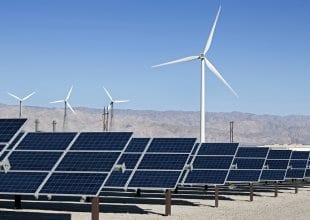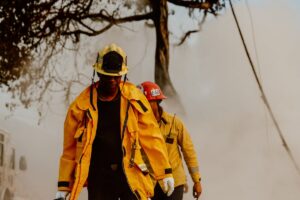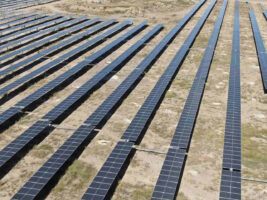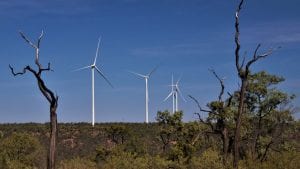The ACT government says submissions to its latest “next generation” renewable energy tender indicate that solar power is now competitive with wind energy, possibly suggesting a major shift in the roll-out of renewable energy technologies in the country in coming years.
ACT environment and energy minister Simon Corbell told the Clean Energy Summit that the reverse auction of more than 200MW of renewable energy capacity – which will take the ACT to its goal of sourcing the equivalent of 100 per cent of its electricity from renewables by 2020 – is pitting wind energy against solar.

The results are not likely to be announced for a few weeks, although it is known that more than 1,000MW of capacity was tendered, and this included half a dozen solar projects.
“What I can say is that there is clear and real competition between wind and solar for first time through this market discovery process,” Corbell said.
Corbell has previously said the submissions to the tender had been “impressive” on price. The ACT recently sourced the cheapest wind energy in Australia, when it contracted another 100MW of capacity from the Hornsdale wind farm in South Australia for $77/MWh, which is fixed for 20 years and does not rise with inflation.
While most forecasts assume wind energy will play a dominant role in meeting the 33,000GWh renewable energy target, some analysts suggest much of the capacity could come from large-scale solar as costs fall dramatically, a process being helped by the tender being run by the Australian Renewable Energy Agency.
West Australian energy minister, Mike Nahan, also suggested that large-scale solar would play an increasing role in meeting the RET, saying that the current tender being held by the state-owned utility, Synergy, suggested solar costs were falling sharply.
“The cost of solar is coming down, particularly when integrated with existing infrastructure,” he told the conference.
Nahan indicated he was not, however, a fan of wind farms. He said the state’s biggest wind farm, the 207MW Collgar project near Merredin, was producing electricity when it wasn’t needed.
“We are not going to (contract) any more isolated wind farms – we are not going to let them disrupt the system … they destroy the system,” Nahan said.
Nahan lated told RenewEconomy that numerous solar projects had been submitted to the tender – including the long mooted expansion of the 10MW Greenough River solar farm near Geraldton – and some of the proposals included an element of storage.
Nahan said rooftop solar was continuing to grow and would provide “almost all” of the required additional capacity for the next 10 years. “We don’t need any additional base load capacity going forward.”
WA has predicted that rooftop solar could meet all daytime demand within 10 years. Nahan said new initiatives were looking to extend rooftop solar to new households, including rental properties, and there was a big lift in interest from commercial properties, such as supermarkets and large retail stores.
“We have got a lot of flat roofs and a lot of sun, there is a lot of room for capacity to expand. We expect the commercial solar market to take off,” he said, adding that solar had “done some really good things to peak load, and diminished the peak, and pushed it back into the evening.
He said there were “huge benefits” from that and this would be increased in a lot of ways by the addition of battery storage, noting activity in new housing developments and remote towns and communities.
The ACT government’s new “next generation” tender will also be used to help fund the deployment of up to 5,000 battery storage systems in homes and businesses in the Capital Territory.
Corbell says this will be equivalent to around 36MW of battery storage capacity, and he estimates it will deliver some $220 million in network savings to the local grid.
Corbell also says that “sub-national” governments like the ACT and state governments will continue to play a critical role in pushing renewable energy, rather than leaving it to the federal government, which is being argued by the large coal and gas generators.
“This is a period of disruption …and you can be sure that it is not the incumbent players that are going to facilitate and drive that disruption,” Corbell said.
“Federal government will not be the only player in driving energy policy in Australia. New actors will emerge and they will increasingly be sub-national governments, like the ACT, like Victoria, and like the Sydney and Melbourne city councils.”
Corbell said the forthcoming meeting of state, federal and territory energy ministers, called by new federal energy minister Josh Frydenberg will be an “opportunity for state and territories to stand together and reject assertions that there should not be state-based targets.”








